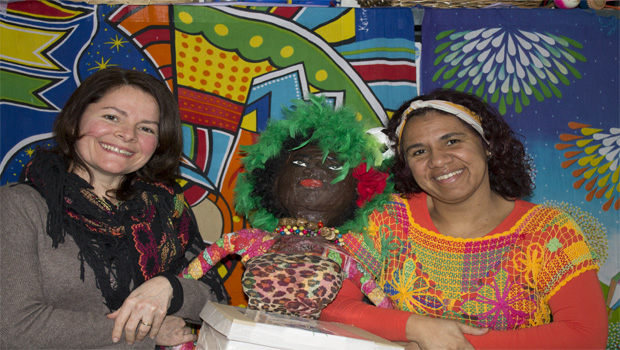Due to its history, Brazilian culture was forged by taking elements from different cultures of the world and reinterpreting them. We interviewed Isabel Duarte and Camelia Branca Prado from the Brussels-based Brazilian Association Arte N’Ativa, to learn more about Brazilian culture and the Brazilian community in Brussels.
Arte N’Ativa was officially created in 2011 following the Europalia International Arts Festival – Year of Brazil in Belgium. “The association was born from the desire to highlight the Brazilian culture and share it with the rest of society. This is the idea that through culture we can create social bonds and therefore use culture as an instrument of social integration. All our projects and activities share this goal.” said Isabel.
Thus, the association offers a multitude of activities aimed at both the Brazilian and European communities.
“We organise regularly some Roda (circles) de Samba, de Forró, Chorinho, Bossa Nova and Brazilian Jazz every month, and every Tuesday evening rehearsals are open to the general public.” said Isabel. Brazilian rhythms are the result of the mixing of different communities and cultures, such as African rhythms for Samba, or European musical instrument such as the accordion.
However, over the past years, it is the musical genre of Bossa Nova that became quite popular in Europe. This musical style was born in Rio de Janeiro in the late 1950s, with a small group of students rejecting the traditional folk music. The founding fathers of the movement are Joao Gilberto, Antonio Carlos Jobim and Vinicius de Moraes.
In Europe, Bossa Nova became popular with artists like Henri Salvador. Today, the European tradition continues with groups like Bossa Flor, for example, who revisits Brazilian standards of Bossa Nova by playing the original versions in French, English and Italian.
In addition to music, Europe adopted another Brazilian tradition, Capoeira. “This is an Afro-Brazilian martial art, practiced with musical accompaniment, that has its roots in the methods of combat and dances of slavery. Slaves could only use their feet as their hands were tied.” said Isabel.
Arte N’Ativa offers courses of Capoeira and other workshops such as the Community Therapy Circle. “This circle is mainly for disadvantaged people who emigrated for economic reasons or because of inequality. By doing this project, we try to do to avoid the phenomenon of ghettoisation and make such they are socially integrated.” explained Camelia, the community therapist of the association. This social project was created in Brazil 15 years ago as a public health program based on listening to peoples’ suffering cause by exclusion to help people with social integration.
“I am a dentist and I struggled to insert myself professionally in Europe because there are some obstacles to get an equivalent degree and to be able to work. So I found another way to integrate myself, and it was through culture. People are curious when I tell them I am Brazilian, it is an attractive element that can start a conversation.” , recounts Camelia.
The association hopes to develop, in partnership with the Brazilian Consulate, an educational program for children born into a mixed family, where culture is not necessarily transmitted in his family.
Arte N’Ativa will be at UNITEE’s United Cultural Festival and will represent Brazil with a demonstration of Capoeira and a performance from the group Bossa Flor.
For more information on the Brazilian community in Brussels and the activities of the association click here.


Leave a Reply